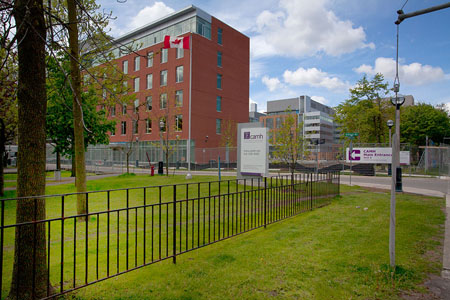
The World Health Organization's definition of health as "a state of complete physical, mental and social well-being, and not merely the absence of disease or infirmity" implies that perfect "health" is an unattainable ideal, and this point of view is also reflected in the concept of mental health, as no person will exhibit all the symptoms of mental health all the time. Freud's definition of health as the capacity "to work and to love" is widely accepted by mental-health specialists as simple and accurate, and does not reflect the legal or moral considerations which often colour attempts to describe mental health.
Hippocrates was one of the first writers to challenge the belief in supernatural causes of mental illness, a belief that had prevailed since ancient times. Hippocrates claimed that mental disease had a physiological and natural basis. An astute observer, he described in clinical detail a number of mental conditions now known as phobias, mania, depression and paranoia. By the Middle Ages, however, attempts to explain mental illness through rational mechanisms were replaced by theories of demonology and witchcraft. Those who opposed the habit of attributing mental disorders to possession by the devil included Johann Weyer (1515-88), considered the father of psychiatry, and Paracelsus (1493-1541).
Philippe Pinel (1745-1826), director of 2 institutions in Paris for the mentally ill, was one of the first reformers to advocate a humane approach to mental patients. In England the Society of Friends (Quakers) supported the work of reformer William Tuke (1732-1819) who established a country retreat for the mentally ill, who, although treated kindly, were expected to undertake manual labour. In the 19th and 20th centuries the work of Sigmund Freud revolutionized the psychological understanding of individuals and the concepts of mental health.
Mental Health in Canada
In 1714 the Hôtel-Dieu in Québec provided a ward for women who were mentally ill and later took in about 12 men, but treatment of the mentally ill both in New France and British North America was primarily a family responsibility, and patients who could not be cared for at home were placed in jails and poorhouses under deplorable conditions, eg, overcrowding, poor sanitary conditions, inadequate food and heating, and no intervention or treatment. The mentally ill, often caged or kept in barred rooms, were thought to be morally unfit and were treated essentially as sinners. Asylums for the insane were opened in 1835 in Saint John, New Brunswick, and in 1841 in Toronto. The latter, which was begun in an abandoned jail, was transferred to a wing of the Parliament Buildings and finally to headquarters at 999 Queen Street.
Changes in care in Canada and the US were initiated by Dorothea L. Dix (1802-1887), Richard M. Bucke, Charles K. Clarke, Clifford W. Beers (1876-1943) and Clarence M. Hincks (1885-1964). Dix, a Massachusetts schoolteacher, wrote, lectured and informed the public and legislators about the deplorable conditions in mental institutions. She was successful in influencing a number of state legislatures either to establish or improve their mental institutions, and because of her efforts a mental hospital was built in St John's in 1885. She also lobbied the Nova Scotia legislature and oversaw the building of a hospital for mental patients in that province.
Dr Richard Bucke was appointed superintendent of the Asylum for the Insane in Hamilton in 1876 and a year later of the asylum in London, Ontario. He believed mental illness was a "failure of the biological process by which mankind adapts to change." In his attempts to reform the crude treatment of mentally ill patients he abandoned the practice of pacifying the inmates with alcohol, ceased to "restrain" the patients, opened an infirmary to treat physical ills, and inaugurated regular cultural and sports events in which the patients were encouraged to participate.
Dr Charles Clarke was an assistant superintendent at Hamilton asylum in the early 1880s, and later superintendent of the asylum at Kingston, Ontario. By 1887 he had changed the asylum from a jail to a hospital and was instructing nurses and attendants in the care of the mentally ill. He ceased to restrain inmates. By 1893 he was advocating that the term "asylum" be dropped and that special hospitals be constructed for the mentally ill.
A Connecticut engineer and founder of the mental-health movement in North America, Clifford Beers had suffered an episode of mental disorder at the age of 18 while a sophomore at Yale University. At one point he was hospitalized in the Hartford Retreat, which had been founded by Dr Eli Todd 71 years earlier. He was also housed in other psychiatric institutions, and was aware of the appalling treatment and physical abuse suffered by patients. On his release, he wrote A Mind That Found Itself, in which he described his experiences. In 1908, the year his book was published, he founded the National Committee for Mental Hygiene.
Dr Clarence Hincks was born in St Mary's, Ontario, the only child of a schoolteacher and a Methodist minister. His interest in mental health was partly the result of his own experiences with severe depression. In 1918, with Beers's help, he organized the Canadian National Committee for Mental Hygiene, which later became the Canadian Mental Health Association. Both organizations were influential in promoting mental-health issues in both the US and Canada. After WWI, he toured asylums across Canada, and was shocked by what he found. In 1920, with Beers, he organized the International Committee for Mental Hygiene (which in 1948 became the World Federation for Mental Health, headquartered in London) and helped plan the first International Congress on Mental Hygiene, which was held in Washington in 1930. Hincks was one of the first physicians to recognize the value of prevention and of treating sufferers of mental illness before they were incapacitated. His work led to the development of child-guidance clinics for the early detection and prevention of mental illness.
Perhaps because of the psychoanalytic focus on the development of children or because of Hincks's conviction that mental health began in childhood, academic interest in child development began in earnest during this time. Hincks persuaded benefactors to fund the St George's School for Child Study at the University of Toronto and the McGill University Nursery School and Child Laboratory in Montréal in 1925. A psychologist, Samuel Laycock (1882-1971), came under the influence of the charismatic Hincks during one of Hincks's visits to the West. He became professor of educational psychology in 1927 at University of Saskatchewan and director of education for the Mental Hygiene Committee in 1929.
WWII profoundly affected attitudes towards mental health. The medical examinations of recruits revealed that thousands of apparently healthy adults suffered mental difficulties. This knowledge affected public attitudes towards mental health, and stimulated research into preventive measures and methods of treatment. It has also led to a better understanding of the emotional needs of children and of the role of stress in causing mental disorder. Indeed, it is commonly held today that symptoms of much mental illness are a response to everyday or unusual stresses and are probably transitory.
Treatment of Mental Illness
Mental illness is the most pervasive health problem in Canada. Universal medicare in Canada includes coverage for psychiatric illness (as well as any other medical condition), but all mental-health problems are not necessarily psychiatric problems, and there has been a significant increase in demand for care for the full range of behavioural and adjustment problems. Mental illness may be treated by family physicians, psychiatrists, psychologists, social workers and psychiatric nurses, but these professional groups have not met all of the mental-health needs. Specific problems, such as those involving alcoholism or smoking, have led to the development of very large and sophisticated self-help groups, eg, Alcoholics Anonymous, founded in 1935. There are other groups whose aim is the development of healthier life-styles or healthier dietary habits and who offer structured programs and group support to achieve these ends.
In the past 2 decades, research towards evaluating the psychotherapeutic, behavioural and biochemical interventions for mental-health problems has increased. For example, both effectiveness and cost studies of home treatment versus hospital psychiatric treatment have recently been carried out in Montréal. Findings from these studies have allowed a clearer understanding of the usefulness of such interventions and have pointed the way toward innovative approaches.


 Share on Facebook
Share on Facebook Share on X
Share on X Share by Email
Share by Email Share on Google Classroom
Share on Google Classroom


